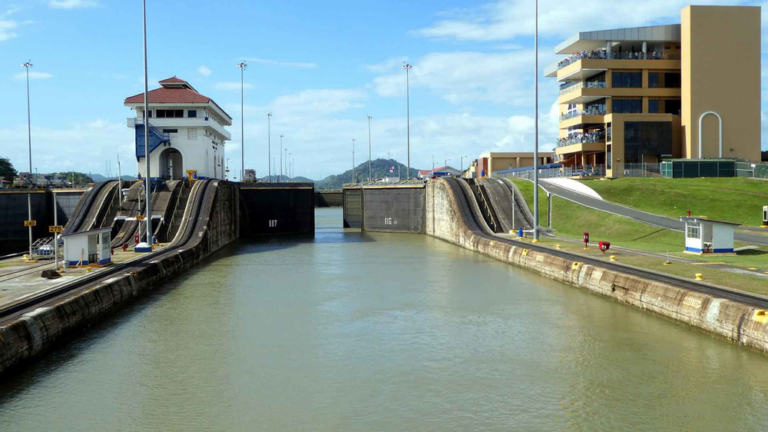The Panama Canal expansion project is finally nearing completion after more than half a decade of work and an investment of billions of dollars. The third set of locks is scheduled to allow super-ships to pass starting on the 27th of June, 2016. What this means for economics and trade agreements worldwide has been a hotly debated topic ever since the project’s preliminary feasibility studies were initiated. The effects upon the shipping industry could be profound.
A Short History Lesson
The Panama Canal was conceived out of necessity. As the world opened up and global trade expanded, efficient routes were needed by transporters in order to satisfy the fickle market. A delay of weeks, or even months, meant lost profits and a changed arena. The industrial age canal was completed over a century ago, after the United States of America took over the the failed French project. The passageway has served as a hub of international transport ever since.
However, in response to increasing demand, shipping vessels have grown both in size and number. In 1914 only about 1000 ships used the shortcut, as compared to 14000 in 2014. Congestion and stoppages are now common. Modern super-ships are also becoming too large to fit through the locks.
Bigger, Better, More
Cargo is often measured in TEUs, which stands for twenty foot equivalent units. These are the large, rectangular metal containers that have been standardized for ease of transport upon trains, trucks and ships. Previously, the Panama Canal could accommodate vessels that carried approximately 5000 units. This is known as the Panamax limit, which dictates dimensions and weight. The new locks allow for vessels with nearly three times that capacity. These Neo-Panamax ships, as they are called, presently account for almost twenty percent of the world’s shipping fleet. That ratio is expected to double before too long.
Rethinking Distribution Options
There are relatively few shipping lanes for importing goods from East Asia to the East Coast of the United States. A long, pirate-infested route goes south and then west, threading the Suez Canal before crossing the Atlantic. Another long route goes east across the Pacific, then around the ship-killing tip of South America. The Panama Canal was built to provide a safer shortcut (nearly two weeks less) for this way. The fastest route is directly across the Pacific to one of the West Coast ports. From there the cargo is distributed and moved east using the American inter-modal system of planes, trucks and trains. Despite being the quickest, this route is often slowed to a halt by internal kinks, trade disputes and labor strikes.
The attractiveness of each option is about to change. Once the expansion project is complete, it is expected to only take a few years before ten percent of container traffic has shifted to the eastern ports. The western ports will still realize some growth, due to general increased demand, but nothing like what is forecasted for the east. The fastest route will remain through the West Coast and the inter-modal system, but the most cost-effective way will now be directly to the East Coast, by way of the expanded Panama Canal.
New Opportunities
Ports on the Eastern Seaboard of the United States and in the Gulf of Mexico are preparing for the increased volume of the massive vessels by upgrading facility operations. For example, the New York-New Jersey port has undertaken projects to widen channels, install bigger off-loading equipment and raise a bridge to provide clearance for larger ships. Even metropolitan cities like Chicago, Memphis, Detroit and Columbus will have a land-locked role to play as the battleground upon which the U.S. shipping industry competes starts to shift.
The East Coast ports primed to realize the most positive change are the New York-New Jersey complex, Norfolk and Savannah-Charleston. It is unclear how the Baltimore, Miami, New Orleans and Houston ports will be affected. In the west, the Seattle-Tacoma, Oakland and Los Angeles-Long Beach ports will likely experience a loss of market share but still see considerable traffic. Unfortunately, it is quite possible the Los Angeles-Long Beach complex will become the most disadvantaged of all the U.S. ports. Despite a favorable location, the frequent labor slow-downs and union posturing serves to tempt importers to seek less turbulent options.
Keeping Current
Staying informed of the winds of change in the shipping industry is important to both importers and the businesses that rely upon transported products for existence. As trade routes evolve, new shipping alternatives arise. The Panama Canal expansion project has created incentive to seek out new agreements and examine old contracts.



